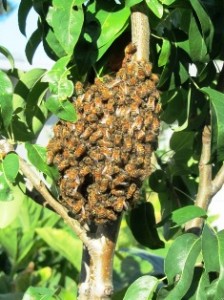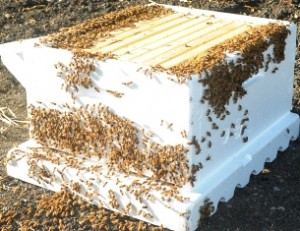Protecting Honeybee Hives
In early October, I helped my beekeeper neighbor medicate his honeybees as well as the bees in the hives he had given me. Our work will ensure the bees make it through the winter. Although some beekeepers do not believe much in the value of medicating bees to ensure the health of the colony, my neighbor (who learned beekeeping at the knee of his father) maintains a healthy colony of bees that are flourishing and producing large quantities of honey.
Healthy bees are necessary for pollination of our nation’s crops. For reasons not well understood, roughly one-third of all the U.S. honeybee colonies have disappeared since 2006 when beekeepers in America and Europe sounded the alarm that worker bees were not returning to their hives and disappearing at alarming rates. Initially beekeepers and scientists postulated that the honeybee problem could be traced to infection by mites, a fungus, a weakened immune system, contact with pesticides, and/or stress or combinations of several factors. More recently, studies are suggesting that the CCD problem possibly is related to the use of neonicotinoids, a new class of pesticides introduced in the 1990s.
Chemically linked to nicotine, neonicotinoids are associated with diminishing bee populations in several new studies, although the Agriculture Research Service (ARS), the internal research agency of the U.S. Department of Agriculture, asserts that little is known about the causes of CCD. The ARS offers the following advice to beekeepers: “mitigation must be based on improving general honey bee health and habitat and countering known mortality factors by using best management practices. This includes supplemental feeding in times of nectar/pollen scarcity.” See, http://www.ars.usda.gov/News/docs.htm?docid=15572#bk
Commercial beekeepers feed their bees corn syrup and neonicotinoids have been used routinely on corn. Recently, Harvard Professor Chensheng Lu was quoted in a New Yorker article as stating he believes one reason for CCD is the “link between high-fructose corn syrup and use of neonicotinoids.”
So while my neighbor and I can medicate against pathogens and parasites, we will be watching to see what the EPA, the USDA, and other governmental agencies decide about the widespread use of pesticides and specifically the use of neonicotinoids.
Tags: bees, honey, insects, pesticides
 Facebook
Facebook Goodreads
Goodreads LinkedIn
LinkedIn Meera Lester
Meera Lester Twitter
Twitter





